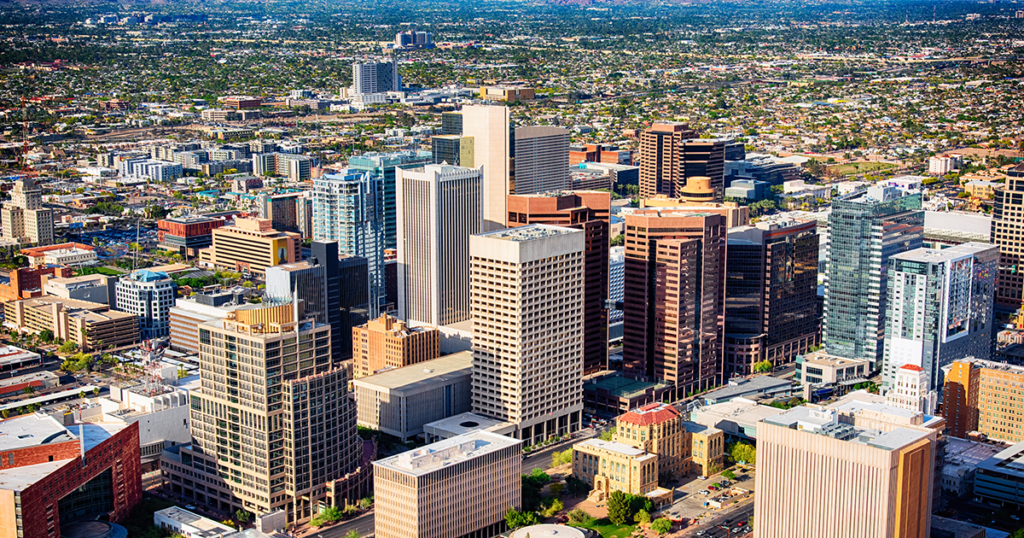Sign up below to receive the latest insights into the multifamily market from redIQ. We swear, we won't blow up your inbox.
Multifamily Markets: Phoenix

Phoenix is the fifth largest city in the United States by population, yet it is the least densely populated among the top 25 most active markets for multifamily development, with just 320.0 persons-per-square-mile. This lack of density is a major reason why Phoenix is the best city in the nation for traffic congestion. Despite having the lowest mean annual wage among the top 10 MSAs, at $49,500/year, it is nonetheless the most affordable to live in, with a rent-to-income ratio of 24.32%.
Multifamily development in the MSA is spread evenly across the top four submarkets, with North Tempe the most active with 6,462 total units in development.
Scottsdale ranks as the best city in the nation to retire according to niche.com, while Mesa comes in at #11. The Phoenix MSA is also popular because of its proximity to other destinations, with day trips possible to California, Mexico, and Las Vegas, among others. Moving.com, a division of Realtor.com, ranked Scottsdale as the 11th best city in the country to raise a family, citing a top-rated school system, low crime rate, and stable housing market, among other factors. U.S. News & World Report recently ranked Phoenix as the 19th Best Places to Live in the United States.
Home to five Fortune 500 companies, Phoenix’s economy is diversifying, improving its economic outlook and helping to drive future multifamily growth. A recent report by Fannie Mae specifically called out the growth of financial, professional services, and manufacturing firms. What’s more, according to the same report, the metro’s predicted population growth of 2.3% is approximately triple the national rate, with millennial growth expected to be five times the national growth rate. All of this points to sustained multifamily expansion, as demand for housing shows no sign of slowing in the near future.
